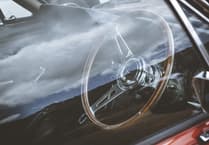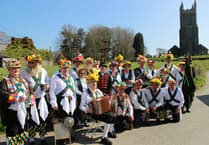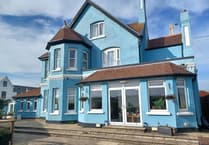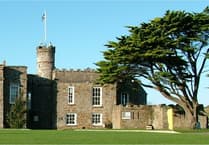THE life and times of Bude Castle was the theme of a fascinating exhibition recently on display in the castle’s Blanchminster Room, writes Christine Williams.
Put together by archive volunteers, the history of the castle and its occupants was brought to life using photographs and artefacts held in the archive store.
The castle was built by one of the leading scientific minds of the Victorian age, Sir Goldsworthy Gurney, sometimes referred to as Bude’s forgotten genius.
Among his many achievements were the invention of the world’s first mechanised road vehicle and the discovery of limelight, which came to be used in the Houses of Parliament, in Trafalgar Square and in some theatres as well as producing the flashing light used in lighthouses.
Those attending the exhibition learned that Bude Castle has striking similarities with Cyfartha Castle at Merthyr Tydfil built in 1825. Gurney had seen it and was so impressed by the architectural style with its great stone walls and crenelated towers that he decided to replicate it on a smaller scale in Bude.
In 1830 he leased a two-acre sandy site from Sir Thomas Acland, close to the industrial activity of the canal wharves. Local people thought he was crazy to build on sand and warned that it would collapse.
However, Gurney knew better and for foundations he packed down the sand and used new material, a concrete raft of Roman cement, high in aluminium and ferric oxide. Completed in 1830 it took two years to build. In 1837, however, his wife Elizabeth died and with his daughter he moved to ‘Reeds’, a small house at . In 1844 he moved to Boyton where he took up farming and in 1850 he gave up the lease on ‘The Castle’.
The exhibition gives details of the three other owners of the castle. Canon William Marshall, who purchased the lease from Gurney for £8, Charles Morgan Cowie, who in 1881 purchased the remainder of the lease for £1475, and in 1930 Lady Edith Nicholson, who inherited the lease from her uncle.
During the 1930s Russian children were seen to be living in the castle and demonstrating their skills in ballet. During the Second World War the castle was used as a military convalescent home and for a while was the HQ of the American Army Rangers. Finally, in 1946 the castle became the property of Bude-Stratton District Council.
The exhibition also features recollections of life at the castle by Mr Owen May who as a young man lived in the castle for six years since his father worked there as a gardener and his mother was a resident caretaker.
Across in the Willoughby Gallery aspects of the history of the Bude and Stratton area were the subject of another extremely interesting exhibition composed of old photos, documents, leases and tradesmen’s bills from the archive and including Philip Jackson’s beautiful oil painting of Stratton, ‘Children fishing on the Clapper Bridge’.
Much of the space was devoted to a little known event: the Bude riots of 1899. These were in response to the intentions of Lord Thynne to fence off large areas of land that he owned stretching across Bude and out to Poughill and Stratton.
Many locals objected as it would have interfered with their rights to graze their animals and a group of 13 men, led by George Cobbledick, organised a full scale riot and were supported by some 600 others.
The ring leaders were carted off to the High Court in London where they had to pay the costs of both sides. But they came to be considered as brave men who saved Bude for its townsfolk and but for this event Bude would be a very different place today.



